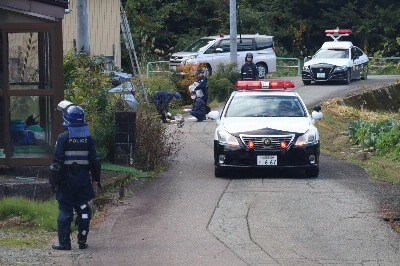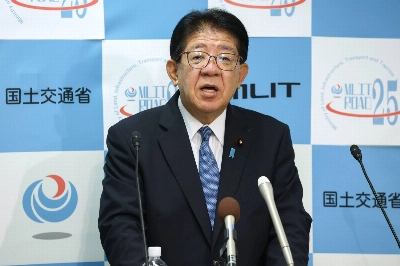If food represents the land, climate and history of the region that nurtured its taste, the specialties of Iwate Prefecture reflect one of Japan's snowiest areas.
The cold weather of northeastern Tohoku helped create the culture of "soba," or buckwheat noodles, while the border between two major feudal clans helped develop a range of sweets.
The waters off the coast, where warm and cold currents meet, are rich in seafood resources.
Even a brief glimpse inside Iwate Ginga (Galaxy) Plaza in the Ginza district of Tokyo introduces visitors to an array of noodles made of buckwheat or wheat, each item neatly packaged and lined up on shelves. The outlet serves as both a shop and a tourism and business information center.
"Iwate is a cold, harsh place where farmers have often suffered damage (to their crops)," said Susumu Sato, head of tourism at the Iwate Prefectural Government's Tokyo branch. On the other hand, Sato said, "This climate is perfect for producing buckwheat, and that's where our soba-eating culture comes from."
Unlike neighboring Akita and Niigata prefectures where, despite heavy snow in winter, warmer summers make them central to Japan's rice industry, Iwate's cold summers often damage agricultural products.
Sato said that local people's fondness for soba has encouraged them to try other types of noodles. Over time, this has resulted in the creation of four famous types of noodles in Iwate.
One is "wanko soba," buckwheat noodles served in small bowls with different seasonings. Locals go out for wanko soba on special occasions, such as when entertaining guests.
Waitresses toss a small bowl's worth of wanko soba into a bowl in front of each customer. After the serving is gobbled up, the waitress throws in another, stacking up the small bowls. When sated, customers place a lid on their bowl.
Another well-known variety of soba is "reimen," or cold noodles, which are originally from the Korean Peninsula. Reimen is particularly popular in Morioka, the prefectural capital, where noodles made of wheat and starch are served with kimchi.
"Jajamen" first came from China and is also made of wheat. It is served with a meat sauce made of soy-bean paste.
Each of these varieties of noodles is sold in gift boxes at the Ginza store.
Iwate people also love "nambu hatto nabe," an "udon" dish combining thick wheat noodles with seafood, for example shrimp and oysters. This delicacy, however, is not available at the store.
Other regional specialties, such as rice cakes and wheat crackers, likewise have a long history.
Various types of rice cakes and dumplings were developed during the Edo Period (1603-1868) under the rule of the Date clan, which dominated southern areas of Iwate and neighboring Miyagi Prefecture.
A popular variety features sweet black sesame sauce and another green soybeans. Wheat crackers also date back to the Edo Period, when the Nambu clan ruled the northern part of Iwate.


















With your current subscription plan you can comment on stories. However, before writing your first comment, please create a display name in the Profile section of your subscriber account page.